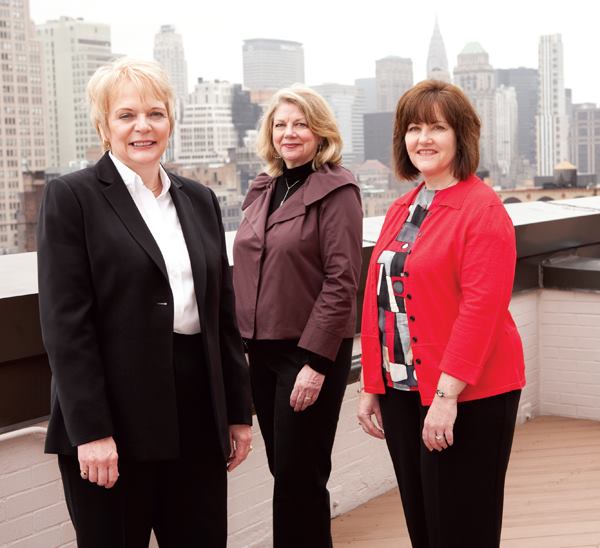With more than 75 years of experience between them, Cheryl English, vice president of market and industry development at Acuity Brands Lighting; Mary Beth Gotti, manager of the Lighting and Electrical Institute at GE’s Nela Park; and Pam Horner, director of government, regulatory, and industry relations at Osram Sylvania, have been tireless advocates of the lighting industry. Through education, advocacy, and outreach, they keep the general public and key stakeholders in government and business informed on crucial matters of lighting design and technology.
What have been the milestones in your lighting careers? English: When I became the first woman VP at Acuity. It’s exciting to see how women have progressed in the company, although there is still a greater need for diversity throughout the industry. Recognition by my peers with the IES Distinguished Service Award meant a lot.
Gotti: I started as a research scientist. It was incredibly exciting to work with Howard Brandston on the relighting of the Statue of Liberty and see the creation of a completely new lamp. It was that experience that got me interested in education and teaching people at Nela Park.
Horner: Being the first woman president of the IES Houston chapter. Going back to school and receiving my master’s in lighting in my 40s. Working at the international level has been particularly extraordinary, especially in preparing for the IES centennial in 2006. The mix of generations at that event was magical and gave me a lot of confidence in the future of the profession.
What milestones have you observed for the industry? Horner: Technologically, there are so many: In the 1980s the development of the twin-tube compact fluorescent; the marriage of electronics with light sources and how they work to drive light; LEDs; the demise of the incandescent light; and so on.
English: The lighting profession has evolved to focus on the quality of the visual environment and human response. Additionally, the nature of manufacturing has changed. Previously, it was an industrial process; now it’s an electronics industry. And that is completely different.
Gotti: Globalization has accelerated international technical resources.
How has technology changed your role in lighting since you first started in the industry? Gotti: In 1976 we were hand-plotting data, we didn’t have computers, everything required handwritten documentation. One thing that has been a bit disappointing is that lighting at the university level is still very small; you’d think it would have progressed further by now.
Horner: Lighting education has always depended on a single individual to lead a program. Well-done lighting education has to cover a lot of ground—human factors, dark sky, toxic material content, energy efficiency. A lighting designer has to be an expert in a lot of things.
English: The Internet has helped to change things dramatically, with webcasts and on-demand learning, but at the same time you loose the experience and diversity of thought—quality education is part of a collaborative process. Over 25 years, we’ve gone from keypunch to computer-aided design. That is a very short amount of time.
Where do you see lighting heading in the future? Gotti: More effective tools to attune lighting.
English: Greater responsiveness of lighting to controls; light and health issues; more efficiency in relation to energy use in buildings; and alternative energy.
Horner: Energy costs are increasing, and we have to ask ourselves what the lighting future looks like, given the marriage between electric and natural light. Daylighting will continue to be at the forefront as people look to the amount of energy used in buildings.
